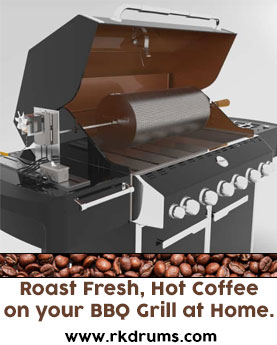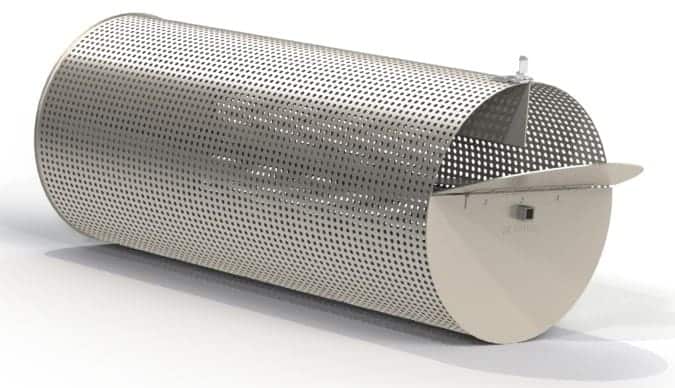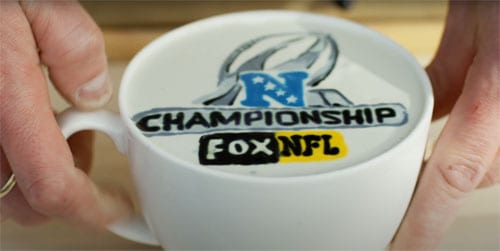

9 Steps to learning to enjoy black coffee.
Why do people drink black coffee anyway? You may not believe it if you’re not yet a black coffee drinker, but it’s because people love it! You can too…
Black coffee has long enjoyed a reputation in that it’s meant to be drunk by burly men, and that it will put hair on your chest. It’s often the holy grail of the coffee lover, to drink black coffee and enjoy it. But the reality is that most people just don’t like the way that it tastes. Why is this? Can black coffee truly taste good? Can you develop a taste for black coffee? The answer is a resounding “Yes”! Here we will teach you some background knowledge in what it takes to make a good black coffee, and 9 steps you can put into practice so that even you can learn to love it.

How does black coffee taste?
Much like a fine wine, black coffee can taste amazing and it can also be arguably not so great in other cases. Let’s have a look at why.
I don't care for black coffee because it tastes bitter or sour...
It’s often heard, “Black coffee is bitter, or sour” is a common expression heard by individuals attempting it for the first time. This can be, in fact, true. However, quality black coffee, perfectly roasted, and delivered to your cup should not be bitter at all. It should produce an inspiring, curious range of flavors like fruit, nut, red wine, chocolate and other flavors, and then leave a pleasant aftertaste that may deliver unexpected flavors at the end. It’s very akin to wine tasting.
Explore the world with coffee.
There can be quite the adventure in every cup, as you can taste the unique characteristics of each region of the world in each coffee. It can even vary from farm to farm. For example, Colombia generally features a more light-weight “body” (think a bit tea-like) feel in the mouth, featuring delicate floral & fruit flavors. This can often be called a breakfast coffee as it’s lightweight and easy to consume in the morning.
Many Guatemalan coffees in general produce a heavier body (heavier, thicker mouth-feel), sometimes strongly favoring cacao, and nut flavors, which goes nicely as an evening, soothing, dessert coffee. I’ve tried Guatemalan coffees so chocolaty that you would swear someone literally put chocolate in it. Many African coffees have curious notes of red wine, cherry and other interesting flavors.
Featured above is the SCAA Coffee Flavor and Aroma wheel which can give you a great perspective at what kinds of great flavors or..... um, not-so-great flavors you can experience. But there is definitely an adventure in every cup. Before we get to encouraging you to try out that cup of black coffee, let's learn a few other tidbits.
This is truly the grand, world-exploring, adventure you’re missing when you don’t give that black coffee a shot. Choosing a good coffee for your first black coffee experience is the most important step. If you attempt black coffee with a bad or average coffee to begin your adventures with, then with good reason, you may end up hating it. If you’re a cream and sugar user, you’ll cover over all of those interesting aspects of the coffee with artificial flavors, creams, and liquors, and you effectively can miss everything great about it. On the flip-side however, once you’ve learned to appreciate black coffee, and should you then encounter a bad coffee, honestly the cream and sugar is about all you can do it make it tolerable. So what is it that makes a coffee bad and intolerable, or smooth, interesting and delightful? Let’s keep exploring!

You'll miss out on a grand world-exploring adventure if you don't give that black coffee a shot. Choosing the right coffee to explore is the most important part.
A poor quality, or stale coffee can ruin the experience for the first-timer.
Unfortunately, there’s also a gamut of errors that can occur during the entire process of delivering the coffee to your cup that can contribute to a poorly tasting cup. So many individuals only experience a poor, black cup of coffee for the first time and are forever turned against it, and honestly with good reason. Let’s see how the black coffee experience can be not just good but great. Then we’re going to show you how to do it properly and then how to learn to appreciate that cup of black.
Did you know? A coffee farm can produce one of the world's best coffees known as a "Cup of Excellence" coffee one year, and then with the exact same processes fail to even rank the following year. So many factors go into an amazing coffee, much of it Mother Nature.
Contributing Factors to Great Coffee
Some Factors that make a great cup-
Proper Picking of only Ripe Coffee Fruit
-
Proper fermentation of green coffee, ideally 16 hours average
-
Luck of the season, favorable sun and rain conditions
-
Care taken of the land, weed removal and fertilization schedules
-
Care taken to dry and turn the coffee during drying
-
Clean transportation of coffee, quality control present to avoid odors and taints
-
Proper warehouse storage, mycotoxin and ochratoxin free, odor and chemical free environment
-
Roasting methods perfected, to the right roast level, and roasted to the right time, not too fast nor too long
-
Fresh roasted, ideally within 96 hours to two weeks of the roast, quality packaging
-
Proper brewing methods, correct water temperature and extraction methods
Detriments to Great Coffee
Negative factors that you can taste-
Picking of unripe, dead or tainted Fruits
-
Fermenting of green coffee for too lengthy of a time leads to sour or fermented taste
-
A poor climate, poor sun or rain conditions
-
Poor weed control, fertilization schedules, poor soil quality
-
Negligence in the drying process
-
Contaminated transportation, with livestock or diesel exhaust taint
-
Poor warehouse storage, mycotoxins or ochratoxins present
-
Poorly roasted, carelessly roasted, dark roasted to hide taints
-
Lengthy Shelf-life, stale coffee, poor bag quality doesn't seal in aroma
-
Poor brewing methods, incorrect water temperature, poor water quality, poor filtration
You can't get a great cup from bad coffee. Start with the good stuff.
Many of the cheaper coffees that you buy at the grocery store, or in large volume cans can offer you this cheaper cost only because the quality of coffee you start with is rather poor. This can actually be tasted in the coffee as sourness, bitterness and other unsavory flavors.
Believe it or not, green coffee is like a sponge and absorbs whatever odors that come into contact with it. It’s not unheard of to have coffee taste like diesel exhaust or livestock because of how it was transported. This can be tasted in the cup. One technique is to take this poor quality coffee and roast it dark to hide the poor flavors and taints in the coffee. From this perspective, burnt coffee is always better than cattle flavored coffee.
Next, throw millions of dollars into marketing, half a cup of cream, lots of sugar and whipped cream into it, and nearly everyone thinks they’re drinking a great milkshake….er…coffee. Except they’re not.
One technique to mask bad coffee is to take this poor quality coffee and roast it dark to hide the unsavory flavors and taints in the coffee...
If you’re looking to try black coffee, the best store-bought option is a specialty coffee from a local roastery, or at least a higher-end coffee (i.e. Peet’s or Barney’s coffee). Many supposedly higher-end coffees, including Starbucks really aren’t the best examples of quality coffee and quality roasts. Many of these chains will buy cheap coffee and roast it dark to hide the taints in the coffee.
Fresh-roasted, high-quality coffee is key.
Many store-bought coffees can be 6 months old by the time you buy it.
A great brewing method and a good brewing technique is essential to great coffee.
Start with whole bean coffee, and grind yourself.
Ideally, you’ll want to get whole bean coffee and then grind yourself. When you grind yourself, you effectively release all of the flavors and aromas trapped inside the bean. This makes a powerful difference in the flavor in the cup. Most coffee connoisseurs will want to use a burr-type grinder, but if you’re just getting started in coffee, you can use a common blade grinder from your local store, commonly around $15. You’ll want to grind, just before brewing.
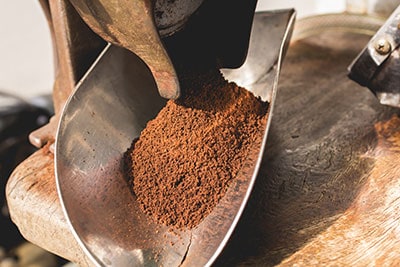

How to Brew coffee with the Chemex (pour over).
The Chemex method can be done inexpensively. Larger pots can be had for $40 on Amazon or cheaper for smaller variants. If possible, get a stainless steel filter for the Chemex as it cannot leave any paper filter taste in the coffee.
This is one of the primary motivators against the old fashioned auto-drip, Mr. Coffee type coffee maker. First, you don’t really have good temperature control over your water, and second, you can taste the paper filter and plastic in the coffee.
Learn how to Brew coffee with the Chemex here.
How to Brew coffee with the French Press.
Learn how to Brew coffee with the French Press here.
French Press Brewing Guide
How is professional coffee tasting done? (Coffee Cupping)
While this article will focus on tasting your coffee, it’s interesting to note how coffee tasting is done professionally. Coffee tasting, professionally known as “Coffee Cupping” is a social activity where professionals, or simply anyone interested in learning to taste coffee can come and experiment with the different flavors, and objectively grade one coffee against another.
Cupping: The Setup
Typically several coffees will be roasted, then evenly spaced out onto a table with the coffee beans ground and available for view. It’s important to make note of which coffees are in which cups, possibly with index cards hidden under each cup. It’s also important for all involved not to know which coffees are which during the cupping process.
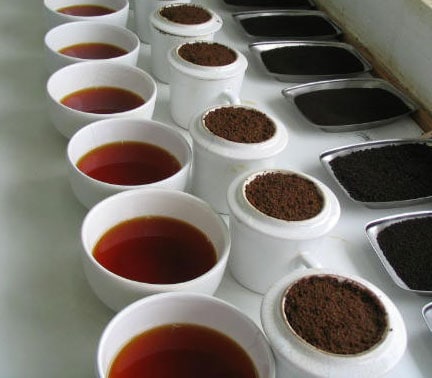
Furthermore, the beans themselves, raw or roasted should not be visible on the table as it’s very probable a taster will form an opinion about the beans, or knowing the region the beans come from, affix their preconceived notions, perceptions and opinions upon that coffee before you even taste it. It removes your objectivity. It’s a bit like tasting a food that you’re pretty sure you’re not going to like. Chances are you’re not going to like it because you’ve already predisposed yourself to the idea that you won’t like it. A taster may have had a bad experience with say, Salvadoran coffees in the past, and if he\she knew she were tasting a Salvadoran coffee, would almost certainly weight the scales against it before objectively trying it.
Objectivity must always be maintained, or it can be a bit like tasting a food that you're pretty sure you're not going to like. Chances are you're not going to like it because you've already predisposed yourself to the idea that you won't like it.
Cupping: Aromas
Tasters will then make their way around the table with a notepad, trying to understand the aromas present on each coffee being careful to notice which aroma notes and smells they most detect in the coffee, by careful contemplation and exploring their own thoughts and senses. Keep in mind, no person, ideally not even the host should know which coffee is which until the end, and the coffees are revealed. In other words complete objectivity should be maintained.
Cupping: Tasting
The same process will happen later with the taste test, tasting the coffee with a spoon, being careful to wash your mouth out before each tasting, making note of your observations on each coffee. What flavors do you taste, what notes can you detect, how is the aftertaste? If you’re interested in knowing more about the formal cupping process, check out this excellent guide at coffeegeek.com. For now, we’ll apply some of the same techniques to our taste test.

Tasting your own coffee (Coffee Cupping)
Applying some of the professional techniques, let’s keep it simple while utilizing sound, and tried-and-true methods.
At this point, we’ll assume you’ve found a great coffee to taste with. As always, we recommend using a coffee from a local roaster that has carefully roasted your coffee within 96 hours ideally, or at least the last couple of weeks. I can’t understate how important the freshness factor is.
Step 1. Clear your mind, and your workspace.

Step 2. Prepare your equipment

Step 3. Grind your coffee if possible, just before the brew.

Step 4. Boil your water

Start your water to boil. While waiting, revisit your ground coffee a couple more times and see if you can pick up any new aromas. What do you like about it, what do you dislike? Back to the water. Remember you’ll want to pour your water at around 202F. This is approximately 10 degrees below boiling. You can roughly achieve this by waiting 25 seconds after you take it off the stove.
Step 5. Wet the grounds

Step 6. Pour the coffee slowly into the cup
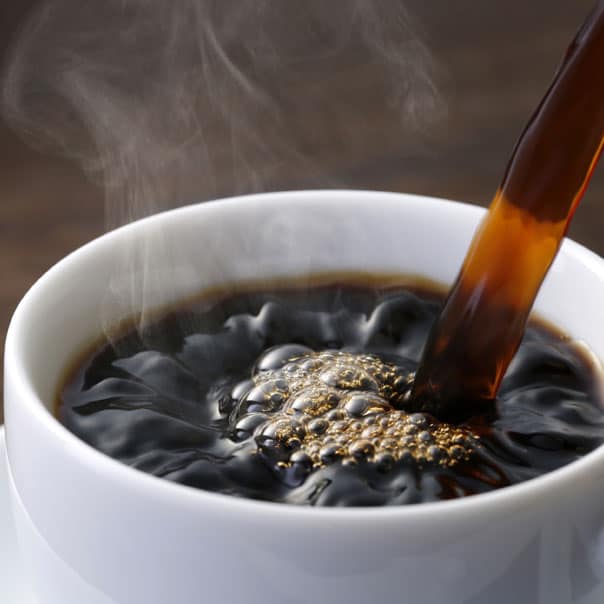
Pour the coffee slowly and carefully into the cup, taking note of the aromas. As the coffee fills the cup you may be surprised to see that you can pick up on additional aromas as you pour. Don’t be afraid to get your nose near the coffee cup. Make mental or paper notes of the same.
Step 7. Taste the coffee

Step 8. Next Steps

Hopefully, after this, you’ll have tasted what truly good, fresh, well-brewed coffee tastes like. It very well could be the first time you’ve tried it under these conditions. You might not love it straight away, but many people we introduce to fresh black roast say,
“You know, it really wasn’t bad, maybe even good. Maybe I can get used to this.”
Step 9. You know, I still don't like it.




